Advertisement
Quilting To Mend The Wounds Of The Marathon Bombing
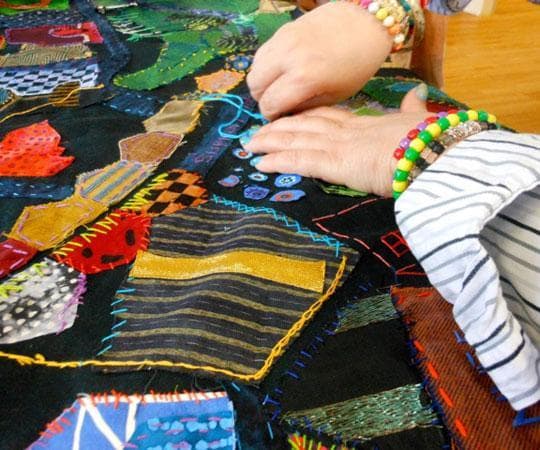
Since mid-May, a month after the Boston Marathon bombings, artist Clara Wainwright has been going from community center to hospital to museum to police station, inviting people to join her in stitching together a memorial quilt to the tragedy.
She calls the project “Mending Boston.” And it’s grown into a folksy, 13-foot-by-5-foot fabric depiction of the city’s landmarks with a yellow strip snaking down the middle to represent the marathon route. The four corners feature portraits of the “four people who lost their lives,” Wainwright says.
“We didn’t encourage people to put anything negative in there. This is Boston after it’s been mended,” says Wainwright, who lives in Cambridge and Gloucester. She’s best known for founding First Night in 1976 and the Great Boston Kite Festival in Franklin Park in 1969. And she reckons “I’ve done at least 60” community quilts over the years.
You can pitch in on the “Mending Boston” quilt from 2 to 4 p.m. Monday, July 8, at the MIT Museum, 265 Massachusetts Ave., Cambridge. (Note: Only 18 to 20 people can gather around the quilt to work at once. And there is a charge to enter the museum.) She provides needles threaded with a variety of colors of floss. “So people can pick a color they like and find a building that needs sewed down,” Wainwright says. They can add their own designs. And they can chat.
“The talking part is very important,” Wainwright says.
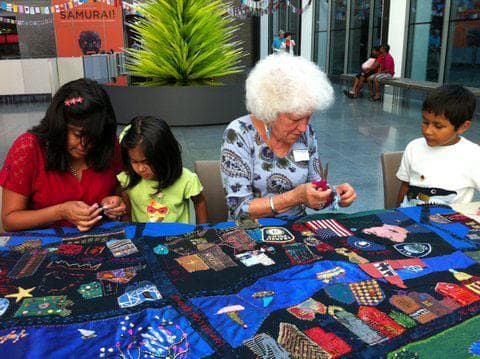
This quilt began with the inspiration of the spontaneous memorial that sprang up outside Trinity Church in Boston after the bombings. “I was just challenged to think if we could come up with a project where people could participate in a lasting project that would have lasting value,” she says.
With help from artist Eve Perkins, she cut out fabric in the shapes of “the public buildings and iconic spaces in Boston” and began gluing them down. At each stop, volunteers have helped stitched those on and added more.
People from Boston University, where bombing victim Lu Lingzi was a student, did her portrait. And, Wainwright says, “One young woman made this beautiful angel that’s flying toward Lu Lingzi.”
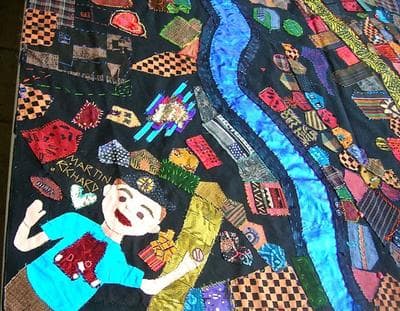
Harron Ellenson, executive director of the Boston Landmarks Orchestra, and her husband were some 18 feet from the second bomb blast, Wainwright says, but were shielded by a green mailbox. “Her husband put on this green mailbox, this thing that saved his life,” Wainwright says.
At the Watertown Police headquarters’ community room, Wainwright says, “a lot of people showed up from Watertown who were really rattled and shaken by what happened there.”
At Tufts Medical Center, a nurse who turned out to be the mother of MBTA Police Officer Richard Donohue—who was shot during a gun battle with the bombing suspects in Watertown on April 19 and survived—sewed on an MBTA patch and embroidered his name. Two trauma surgeons, Wainwright recalls, “did all these stitches and then they tied a knot after each one just like they do in surgery.”
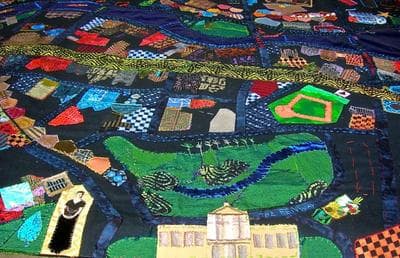
Other stops have included: Boston Asian, Youth Essential Service in Chinatown, Dorchester Arts Collaborative, Codman Square’s Great Hall, Lemuel Shattuck Hospital, Spaulding Hospital, the Isabella Stewart Gardner Museum and the Museum of Fine Arts.
Wainwright says there are plans for the quilt to be displayed at the Gardner Museum in August, the MIT Museum in September and October, and later at the New England Quilt Museum in Lowell, Boston City Hall and perhaps Tufts Medical Center.
“People keep asking where it’s going to end up,” she says. “I don’t know.”
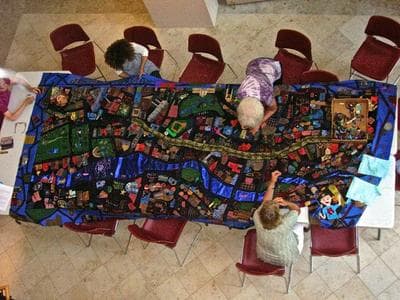
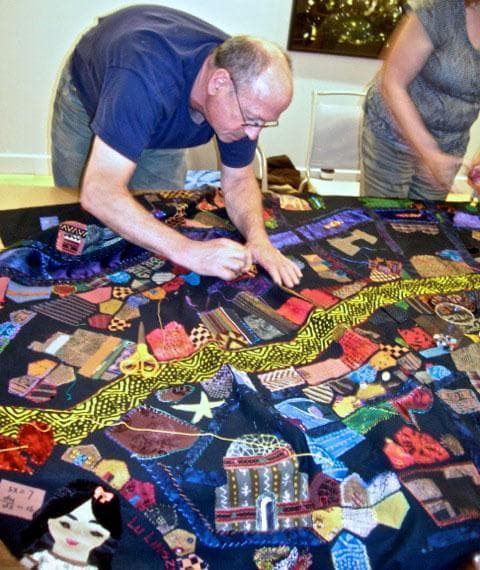
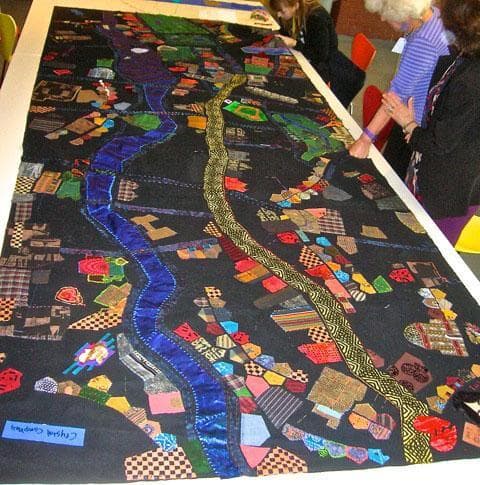
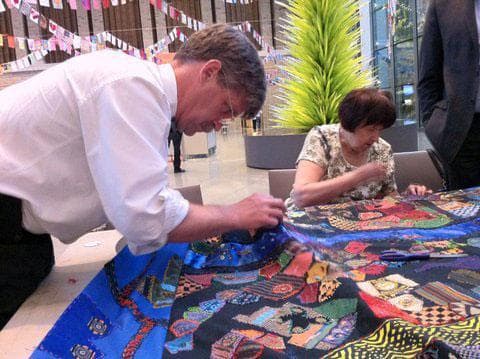
This article was originally published on July 06, 2013.
This program aired on July 6, 2013. The audio for this program is not available.
